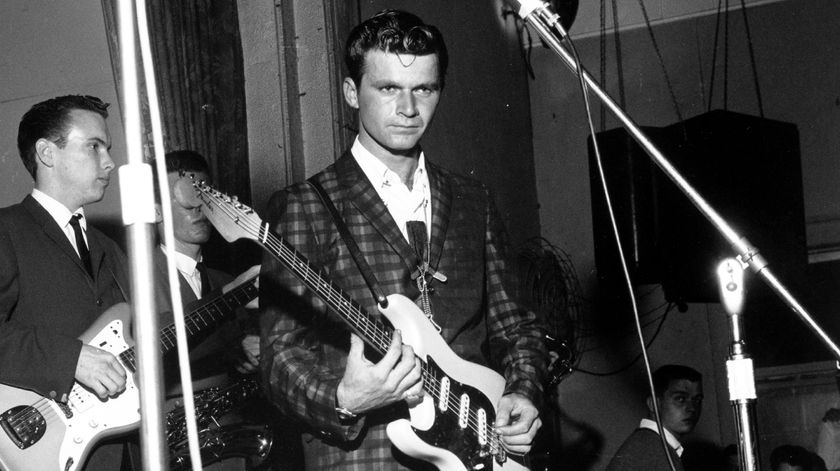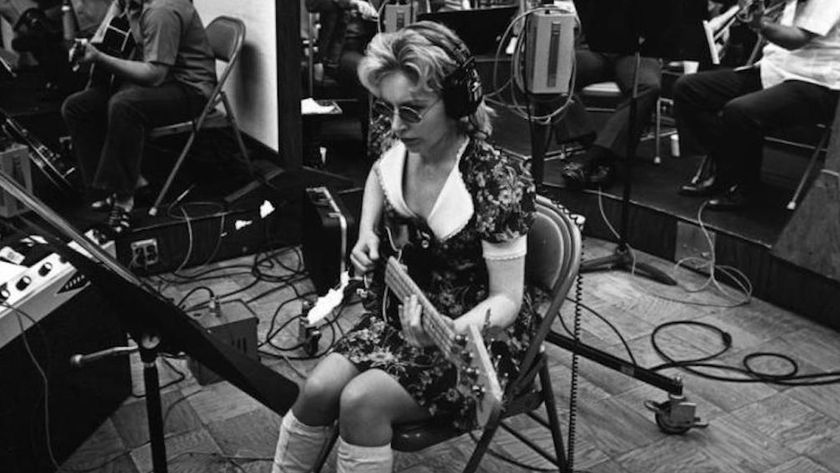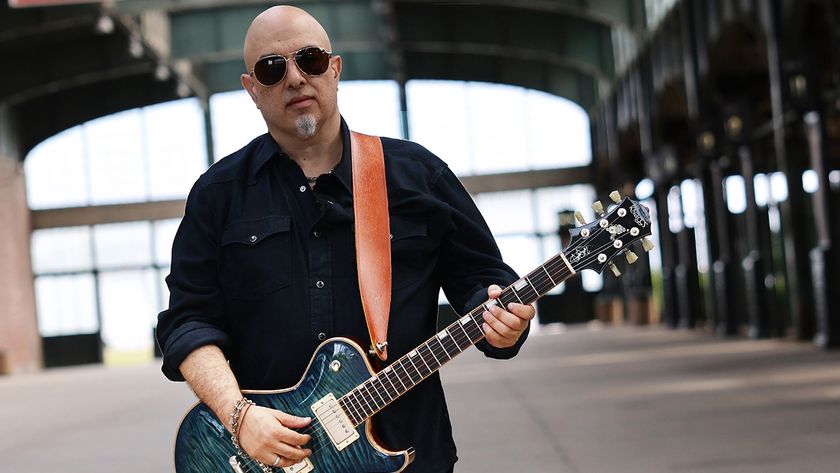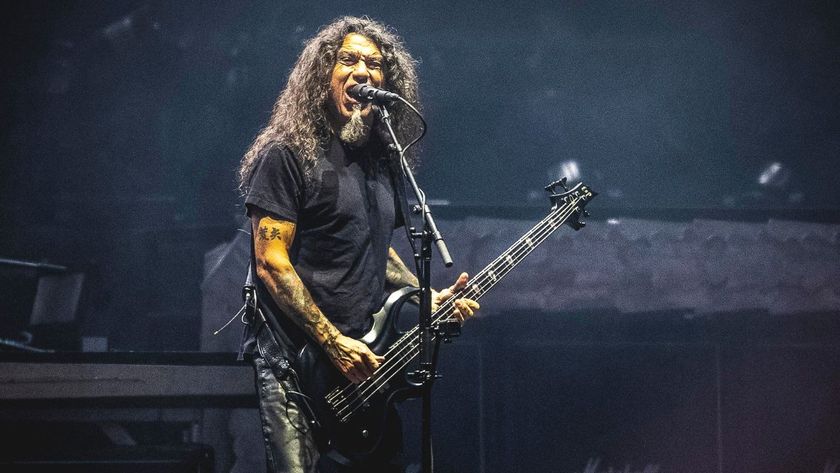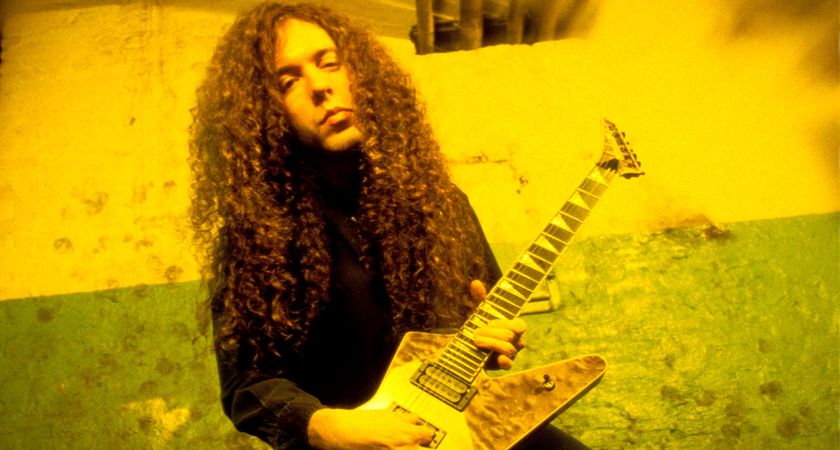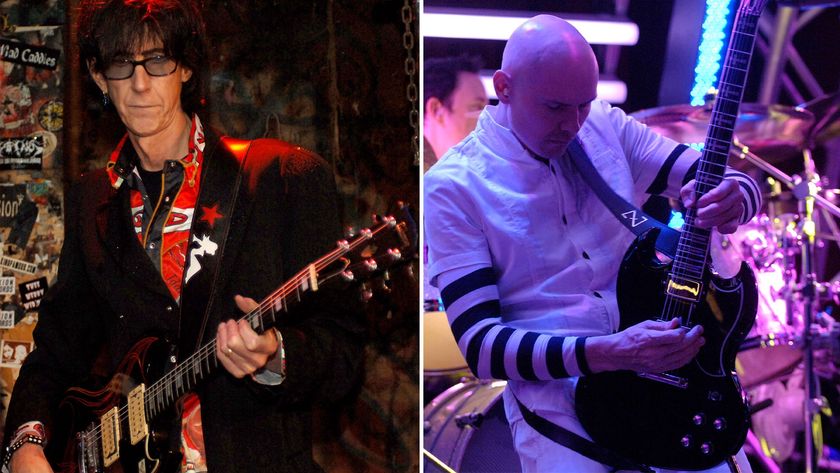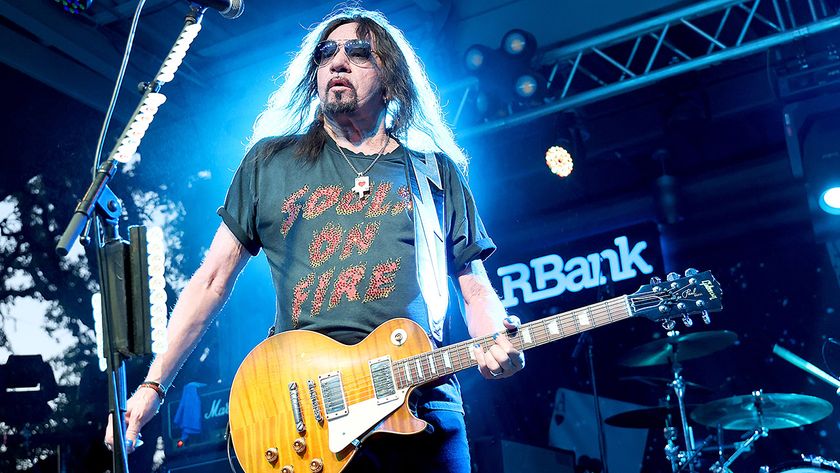“I wouldn’t normally be caught dead with a Tele because I think they’re ugly, but that’s the only guitar I used”: Opeth’s Mikael Åkerfeldt and Fredrik Åkesson on their love of “stupid riffs,” and “recapturing that old death metal magic”
Opeth may have returned in a way to their sonic roots on their new album, The Last Will and Testament, but – with appearances from a Neal Schon signature model and a “not very metal” trick picked up from Eddie Van Halen – there are still plenty of quirks to go 'round
![Opeth's Fredrik Åkesson [left] and Mikael Åkerfeldt sit on an old sofa with their PRS electric guitars. Åkesson looks off into the distance while Åkerfeldt stares into the camera](https://cdn.mos.cms.futurecdn.net/mBjBAxu9jXG82RYpeGpuUX-1200-80.jpg)
Mikael Åkerfeldt has been called many things over the years. At best, the Opeth leader has been hailed as a visionary. But when his band’s tenth studio album, Heritage, was released in 2011, a vocal minority of fans lambasted the singer/guitarist for abandoning his metal roots in search of more progressive and folk-flavored musical meditations.
Some even went as far as sending death threats, enraged by how their favorite musician had forsaken the underground extremities that launched his career in favor of more avant-garde and psychedelic influences which – let’s face it – had always been detectable in his wildly creative pursuits.
For the most part, however, the Swedish quintet were deeply admired for daring to march to the beat of their own drum, resulting in the breathtaking sounds heard on the three albums that followed.
Deep-diving into the ethereal unknown, converging elements of blues, jazz, and classical in ways no group had ever dared, these cinematic and progressive orchestrations would twist and turn in the most delightful of ways, cementing their stature as world-class innovators and true masters of their own destiny.
But Mr. Åkerfeldt, as we’ve grown to learn, can be a tad unpredictable, to say the least. In August of this year, when Opeth dropped the first track from their new album, The Last Will And Testament – a track with the enigmatic title §1 – fans were amazed to discover that the guttural roars and blastbeats of old had returned.
Why? And why now? As Åkerfeldt tells it, this was always going to happen, but only ever on his terms, and when the time felt right…
It’s a late-summer afternoon in London when Åkerfeldt and the band’s lead guitarist, Fredrik Åkesson, meet with TG in the downstairs bar of the Sanctum Hotel in London, a place affiliated with Iron Maiden. Naturally, the pair are also enjoying pints of Maiden-branded Trooper IPA as they discuss the making of The Last Will And Testament.
Get The Pick Newsletter
All the latest guitar news, interviews, lessons, reviews, deals and more, direct to your inbox!
It’s a concept album built around the narrative of a wealthy man’s will revealing dark family secrets. Every track but one is titled with a section symbol representing paragraphs of the will. And as Åkerfeldt explains, that lead track, §1, is what set the tone for the whole piece, both conceptually and musically.
No one’s seen me with a Tele before. I wouldn’t normally be caught dead with one because I think they’re fucking ugly! But that’s the only guitar I used
Mikael Åkerfeldt
“The first song I wrote was §1, but I actually didn’t like it at first,” he admits. “It had some of those death metal connotations which reminded me of Morbid Angel, but I stopped halfway because I felt like an imposter. I let it sit for a while and started writing what would become §7, which had more death metal vocals.
“I started to feel like there was a purpose to it all, especially with the concept brewing. It sounded good, strong, and relevant – a combination of the old with new ideas we hadn’t explored before. I didn’t feel embarrassed, I felt cool! Then I went back to §1, which quickly became one of my favorite songs. It’s short, hard-hitting, and innovative while also being evil!
“It reminded me of how I screamed in the olden days. I would be in the studio clenching my fists to the point where I was bleeding from the nails sticking into my flesh! I felt that thing. It’s hard to describe, but I guess it’s that old death metal magic!”
He makes a valid point. §1 is condensed and succinct – perhaps unusual for a band associated with sprawling 10-minute-plus masterpieces that never seem to run out of creative steam.
From the simplistic chorus riff that nods to Sepultura in their heyday (“I love stupid riffs because they’re easy to play!” Åkerfeldt grins) to the dizzyingly chromatic tapped solo from Åkesson, it’s the kind of song that goes straight for the jugular.
“That idea was developed out of something Mike did on the demo,” Åkesson says. “There was a weird trill in there, which gave me the inspiration for a spidery kind of lick with an evil sound. I added some more tapping into it, while hammering on from nowhere on the B-string, then moving the same pattern a step down.
”I used a Burny guitar, a black Les Paul copy, with a Fernandes sustainer which helped the top notes ring out. It was actually an old Neal Schon signature that I found from a dealer in Stockholm.”
Given his reputation as a gear hound and self-confessed guitar addict, the list of equipment used by Åkesson on the recordings is extensive indeed.
Åkerfeldt, however, has always been more minimalist in that regard, but that didn’t stop him from trying out something completely different for his latest opus. He’s been seen playing PRS guitars, as well as Les Pauls and Strats on stage in the past, but never a Telecaster…
“I only brought one guitar along,” he shrugs. “All my parts were recorded using a Telecaster Custom from the ’90s, with a humbucker in the neck and single-coil in the bridge. No one’s seen me with a Tele before. I wouldn’t normally be caught dead with one because I think they’re fucking ugly! But that’s the only guitar I used.
“It doesn’t hum when you raise the gain. Nobody knows this, but I actually used it on the [Netflix series] Clark soundtrack, but never with Opeth. I love the feel of that Tele, it’s so comfortable I didn’t feel the need to bring anything else. I also knew if it didn’t work, Fredrik would have a bunch of shit for me to try.”

Åkesson’s weapon of choice for the rhythms was his prized 1970 Strat acquired from John Norum, the Europe guitarist who mentored him early on and remains one of his closest friends.
It was plugged into one of two Friedmans (“a BE-100 Deluxe and an old one that Dave Friedman probably soldered himself”) as well as a newly acquired Marshall Studio Vintage head and cab for the cleans. And that was just for the riffing…
“For the leads, I plugged into a Marshall Plexi from 1972, the year I was born, with an old Boss OD-1 from 1980 in front. It has an old chip, so there’s some ancient magic there. Later on, I found one from 1978 in Japan which has the original 14-pin quad op amp [RC3403D] chip.
“I would go into the bass side of the Marshall and roll off most of the low end. I think it’s the same approach Jake E. Lee used on [the Ozzy Osbourne album] Bark At The Moon, as well as Gary Moore on Corridors Of Power. There’s something about the mids that cuts through.”
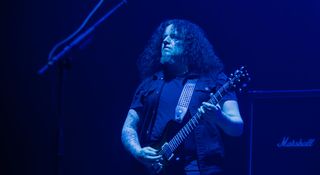
“And we shouldn’t forget about the cabinet!” Åkerfeldt interjects. “A local engineer found an old Marshall from the 60s. It had probably never been serviced! I asked the Rockfield Studios owner if one of my favorite English prog bands, Spring, used that cab on the one album they recorded. And he said they definitely did. It sounded fuckin’ awesome. It was old, beat-up, and looked like somebody had taken a dump on it, but the tone was amazing.”
Another secret weapon came in the form of the AmpRx BrownBox, used to attenuate the power running into the heads. The old Plexis were made for 220V, explains Åkerfeldt, while modern sockets in the UK and Europe often run at 240V, which will obviously affect the end result.
The BrownBox can therefore remedy this, he notes, and take the voltage down even further, if so required.
“It’s not a new concept by any means, but we found it took a lot of the annoying bright frequencies away,” Åkesson says, noting how Eddie Van Halen would bring his American power down to 90V with a Variac to achieve what is often lovingly referred to as ‘the brown sound.’
“The only bad thing is that turning down is not very metal!” Åkerfeldt laughs. “AC/DC famously wrote High Voltage… well, our version is more like Correct Voltage!”
But whatever the voltage, it should come as no surprise that there’s no shortage of big guitar moments on The Last Will And Testament. Perhaps it’s Åkesson’s lead work on closing track A Story Never Told that showcases the guitarist at his most melodically enthralling – helping narrate the story behind the music one note at a time.
In similar ways to his Lovelorn Crime solo on Opeth’s previous full-length, In Cauda Venenum, it’s a long-form statement that hits in all the right places thanks to its well-considered balance of choice notes, expressive vibrato, and striking sense of lyricism.
Its composition took quite a bit of time, Åkesson admits, but the luxury of writing and demoing at his own home studio gave him the creative freedom required to come up with something extra special, using trial and error to find the right contrast of feel, sophistication, and technical wizardry.
“I knew it needed a unique melody to start with,” he says. “Then towards the end I borrowed some of Mikael’s vocal melodies to close it all up. I was going for a combination of Ritchie Blackmore and David Gilmour. The solo from Rainbow’s Snowman was a loose inspiration there, just in terms of vibe. I’m very happy with how it came out.”
“There’s one note in there that just kills everything else,” Åkerfeldt says. “It’s so strong that the rest of the music goes down in favor of that note. I wondered if we did something in the mix, but no, it just overpowers the rest of the music. People keep telling me how beautiful the solo is and I thank them to steal credit!”
Other notable leads include Åkerfeldt’s tear-jerking blues at the end of §6 – nodding to old school greats like Eric Clapton and Peter Green – Åkesson’s contributions to §5 – which features some screaming wah leads using dominant ideas – and the mid-section of §6, which effectively serves as a tribute to neoclassical maestro and fellow Swede Yngwie Malmsteen.
After a Moog solo, I had to do a homage to Yngwie. He was a huge influence on me growing up and I still really love those early albums
Fredrik Åkesson
“That solo comes after a keyboard section, so I figured, ‘why not?’” grins Åkesson, who has also been working closely with Ghost on their latest releases, and previously handled the fretwork in bands like Arch Enemy, Krux, and Talisman.
“After a Moog solo, I had to do a homage to Yngwie. He was a huge influence on me growing up and I still really love those early albums. Everybody in my neighborhood was trying to keep up with him. I wrote this solo the quickest and improvised, what we kept was close to the first take. I wouldn’t say the licks are directly from him, but it’s me playing in that fast style…
“As for §5, that one took a while to write. I couldn’t just go for it because of the chords underneath. I had to put some thought into the modes. It was partly inspired by an Indian player on Instagram called Guitar Prasanna [Ramaswamy], who does all these quick slides. I was jumping between a more happy sound and then something darker.
“I like the sound of dominant, diminished, and minor7flat5 arpeggios – they’re all kinda related to each other, so you can come up with some interesting ideas by mixing things together.”
And while we’re on the subject of interesting ideas, it would be fair to say that Mikael Åkerfeldt is an expert in this field. He has in the past been critical of metal bands who follow trends and stick to tried-and-tested formulas, resulting in recordings that can feel uninspired, sterile, or mundane.
It’s almost too easy for bands to end up sounding the same, he rightly points out. So, as a parting gift to TG, what advice can the progressive metal polymath offer us to help stand out from the crowd, as he himself has done so poetically time and time again?
“My best advice is: real musicians don’t take advice!” he deadpans, half-jokingly. “If you like playing straightforward metal, then sure, that’s what you should do. But if you are open to things, you should try them. It might result in ideas that are less generic.
“I don’t necessarily think our way of working is a good recipe for success. When you start doing weird shit, that’s a starting point for trouble between the writer, the other members, the fans, and even the labels. Don’t forget why you started a band in the first place.”
Opeth, however, are no ordinary band, and even if you go all the way back to their 1995 debut, Orchid, written and recorded when Åkerfeldt was just 20 years old, it’s clear they’ve always been an anomaly to the metal scene around them. And proudly so…
“We were kinda special when we started, writing long songs with shitloads of stuff happening,” he says with pride. “We never had to make the transition from normal to weird – we were already there! I dare anyone to say our debut sounded like anything else, because nothing like that existed in 1994. If you want to break away from the mundane, listen to different kinds of music and don’t rule anything out.
“I don’t have a pre-set idea of how I want to sound. It changes. Something can set you off. You play the wrong chord and suddenly a new world opens up, like Pink Floyd did with Shine On You Crazy Diamond. Your fingers might be in the wrong place, but the accident can sound amazing. Ultimately, you might not have intended it, but you should be open to running with it.”
- The Last Will And Testament will be released on November 22 via Reigning Phoenix.
Amit has been writing for titles like Total Guitar, MusicRadar and Guitar World for over a decade and counts Richie Kotzen, Guthrie Govan and Jeff Beck among his primary influences as a guitar player. He's worked for magazines like Kerrang!, Metal Hammer, Classic Rock, Prog, Record Collector, Planet Rock, Rhythm and Bass Player, as well as newspapers like Metro and The Independent, interviewing everyone from Ozzy Osbourne and Lemmy to Slash and Jimmy Page, and once even traded solos with a member of Slayer on a track released internationally. As a session guitarist, he's played alongside members of Judas Priest and Uriah Heep in London ensemble Metalworks, as well as handled lead guitars for legends like Glen Matlock (Sex Pistols, The Faces) and Stu Hamm (Steve Vai, Joe Satriani, G3).
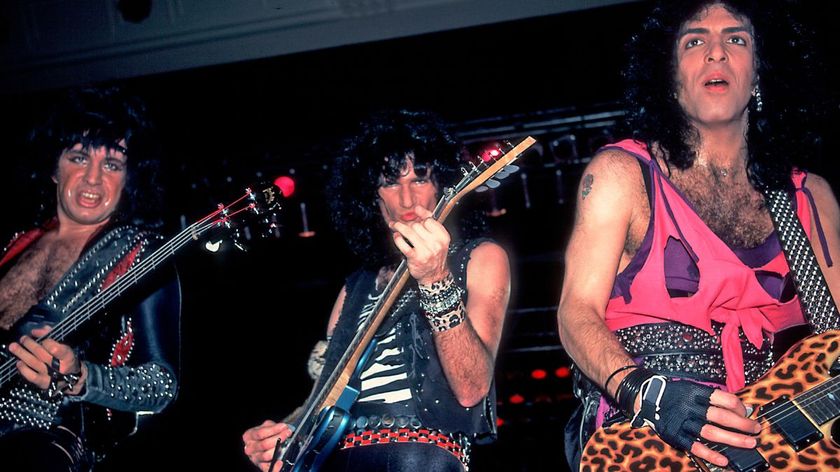
“I’ve always missed being in Kiss”: Kiss announce unmasked Vegas show with former guitarist Bruce Kulick, as Gene Simmons postpones 17 solo dates
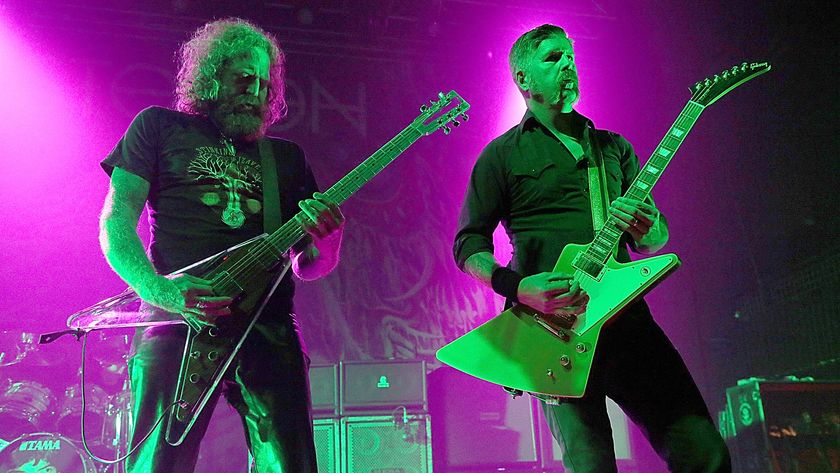
“I’m as serious as a heart attack with Mastodon. I’m not ready to give it up yet. So, we’re going to keep looking”: Bill Kelliher is searching far and wide for Mastodon's next guitarist – here's what the band are looking for









